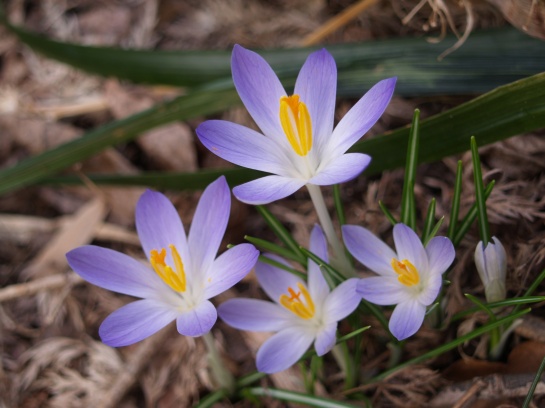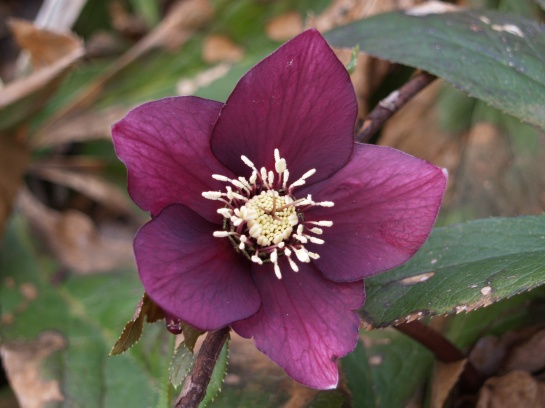 After several warm days, a few blooms of hellebores (Helleborus spp., above and below) have opened, just in time to be buried again by eight inches of snow. Of course, in March it is assured that snow will not last long, so I expect that many of the hellebores will reach peak bloom by the weekend. There is no purpose in continuing to whine that spring weather has been delayed, and now it seems inevitable that this storm could possibly be the last gasp of winter, though the lesson learned in recent weeks is that this cannot be stated with any certainty.
After several warm days, a few blooms of hellebores (Helleborus spp., above and below) have opened, just in time to be buried again by eight inches of snow. Of course, in March it is assured that snow will not last long, so I expect that many of the hellebores will reach peak bloom by the weekend. There is no purpose in continuing to whine that spring weather has been delayed, and now it seems inevitable that this storm could possibly be the last gasp of winter, though the lesson learned in recent weeks is that this cannot be stated with any certainty.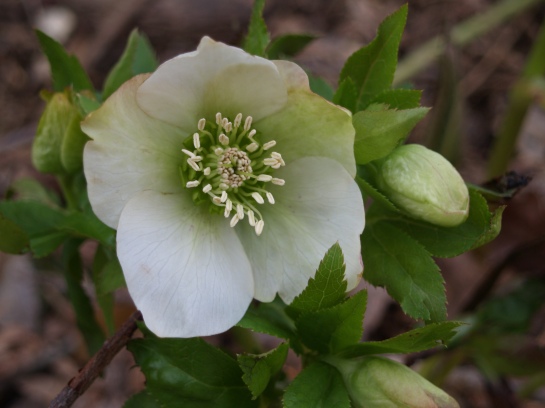
The paperbushes (Edgeworthia chrysantha, below) continue to stray far behind their typical bloom time, though finally the remaining flower buds are beginning to swell. This usually occurs in early February, and often in late January, when the progress of the yellow tipped flowers is followed closely as a sign that spring is approaching. Now, there are no yellow tips, but I expect the buds will progress quickly with warmer temperatures. Many flower buds were lost in the sub-zero temperatures of the winter, but I don’t expect any survival issues for the shrubs, only fewer and later blooms this spring.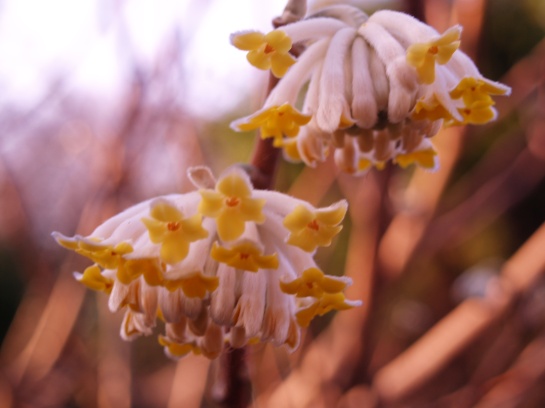
Before being buried in snow, the Winter jasmine (Jasminum nudilflorum, below) had finally burst into nearly full bloom several weeks tardy. In recent warm winters there have been scattered cheery yellow flowers in late December, and many more through January, but this winter there were none until a few peeked out in early March. While winter jasmine often flowers for months in the cold, I expect the period of color will be shortened considerably in warmer temperatures that should be expected in late March. At this point I take nothing for granted, but it seems impossible that the weather in late March will be colder than is typical in February.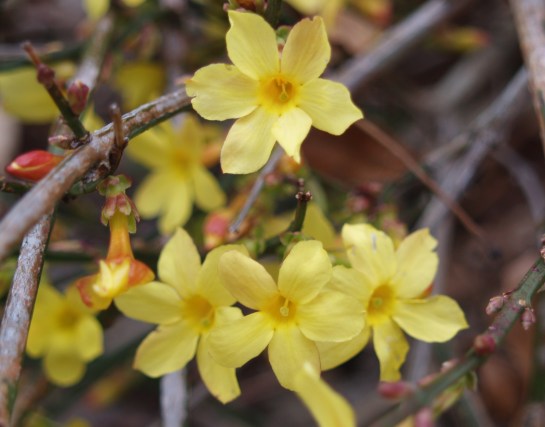
The Japanese andromedas (Pieris japonica ‘Scarlet O’Hara’ below) are only slightly behind their scheduled mid-March blooming time in my chilly northwestern Virginia garden that is wedged between foothills at the start of the Blue Ridge Mountains. Here, late winter blooms are often delayed, even in the warmest winters. The andromedas are closely monitored in early March to catch the first glimpse of color as the buds begin to swell, and within days the flowers will open fully.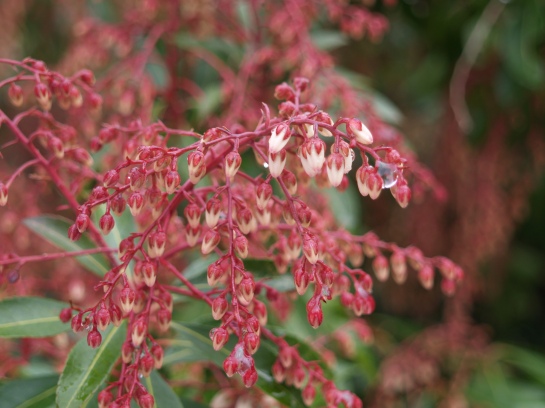
Andromedas are a risky proposition for many area gardens with poorly drained clay soil. Most varieties abhor any degree of dampness, and I’ve had my share of problems with a few cultivars. ‘Scarlet O’Hara’ and the dwarf ‘Cavatine’ seem to be the least demanding, and are also somewhat more resistant to lacebugs that plague the evergreen shrubs. I occasionally hear from gardeners regretting that andromeda planted near an entry door has attracted hoards of bees, but when there are few flowers around in early spring it seems that bees are quite intent on gathering nectar rather than bothering with people. Still, be forewarned if you’re panicked by the thought.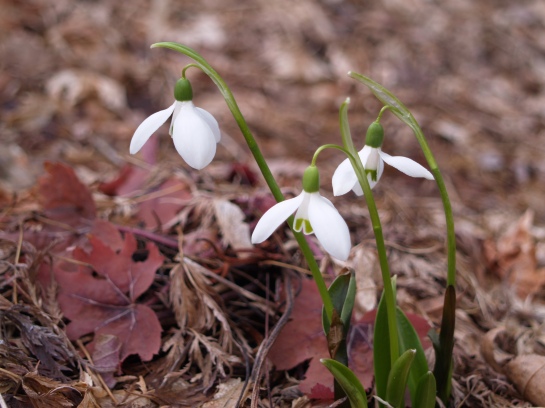
Finally, the snowdrops (Galanthus spp., above) and Crocus (below) have reached peak bloom, though it seems that the squirrels have made off with a few more of the crocus corms over the winter. The snowdrops are never bothered, but what once was a spreading colony of crocus has been reduced to an afterthought. It seems imprudent to plant more until the neighborhood squirrel population is under control, and that seems unlikely. Enough of the garden budget is expended on bird food for the squirrels without contributing more expensive (though not really expensive) crocuses.